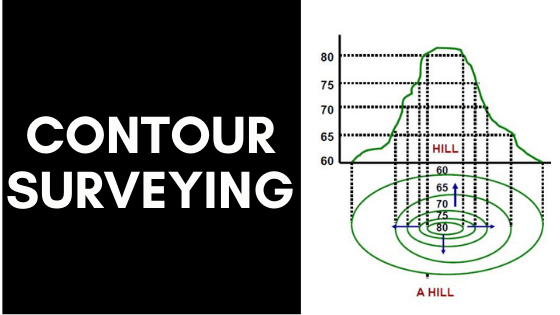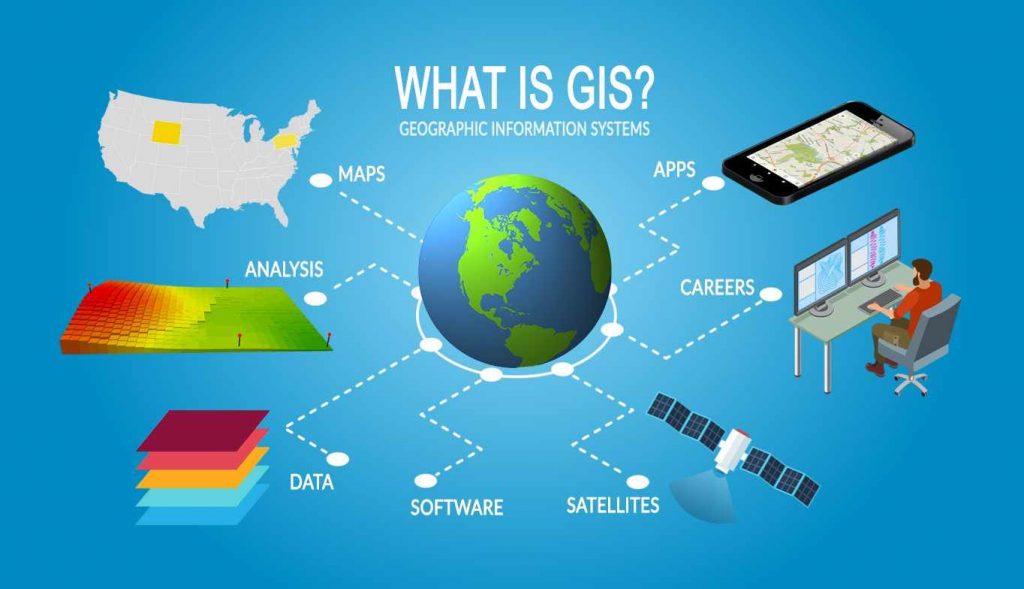Contour Surveying is the branch of surveying in which variation in the elevation of the earth’s surface and their relative positions are determined with help of contour lines.
The process to find out the contour lines in the ground surface or earth surface is called contouring and a map is produced by this contouring process is called contour map.
The objective of contour surveying is to find out the altitude or height of any surface.
Application of Contour Surveying in Civil Engineering
Contour surveying is useful in civil engineering in the following areas:
- In the proper and accurate location of engineering projects such as roads, canals, etc.
- In determining the location of water supply, water distribution and to solve the problem of steam pollution.
- In planning and designing of dams, reservoirs, aqueducts, transmission lines, etc.
- In the selection of sites for new industrial plants.
- To determine the intervisibility of stations
- To determine the profile of the country in any direction.
- To estimate the quantity if cutting-filling of soil and the capacity of a reservoir.

Contour Line
A contour line or simply, ‘Contour’ is an imaginary line passing through points of equal elevation of the death surface. It may also be defined as the intersection of the level surface at a particular ground level.
So, each contour line has a separate and individual altitude concerning the assumed ground surface.
Also Read: How to Read Contour Lines
Characteristics of Contour lines
- In contour surveying, all points in a contour line have the same elevation.
- Contour lines are far away from each other in a flat region and close to each other in the mountainous region.
- Uniform slope is indicated by uniformed spaced contour line from each other and flat ground is indicated as a straight line, uniformed space and parallel to each other.
- A series of contour line which is closed to each other indicated a hill and the higher value inside.
- A series of closed contour lines are indicating depression if the higher value is outside.
- Contour lines are right angle in the valley or ridge portion. If the higher value is inside it indicates ‘Ridge’ or if a higher value is outside the bend it denotes ‘Valley’.
- Contour lines can’t end anywhere but close on themselves or outside the map limit.
- Contour lines are not cross to each other whether there is an overhanging cliff.
- Contour lines never run into one another unless there is a vertical cliff.
- Depression between summits is called a saddle. Four sets of contours are represented here. It represents the junction of two ridges or a dip in a ridge. The line which passes through saddles is called the watershed line.
Contour line can’t be a break, it must be continuous. A contour line consists of the same points so all the same points exist in a single contour line.
Here we can easily access the altitudes of the earth surface. It also produces a plan of that particular portion. So contour map serves both, a plan and a section of that area.
Contour Interval
The constant vertical distance between any two consecutive contours is called the contour interval.
We should use a constant contour interval through a map. The variable contour interval gives a false impression of the relative steepness of the surface in different parts of the map.
The horizontal distance between the two adjacent contours is called horizontal equivalent. It depends on the slope of the ground.
Factors affecting the selection of Contour Interval
There are various factors in contour surveying on which the selection of the appropriate contour interval depends. They are-
Nature of Ground In those countries which have flat and uniform sloping ground, the contour interval is small. In another hand, which countries have hilly region the contour intervals are large. If it’s not large the contours will come too close.
Purpose of the survey: If the area is to be surveyed is small the contour interval is also small e.g. for earthwork determining etc. Where the large interval is used in large areas compared to less important works.
The scale of the map: The contour interval should be the inverse ratio of the scale i.e. smaller the scale, greater the interval ratio.
Time available
Funds available: Lower the contour interval, the greater amount of work.
Also Read: Theodolite Surveying
(…to be updated)


Pingback: Contour line and Methods of Contouring - civillearning